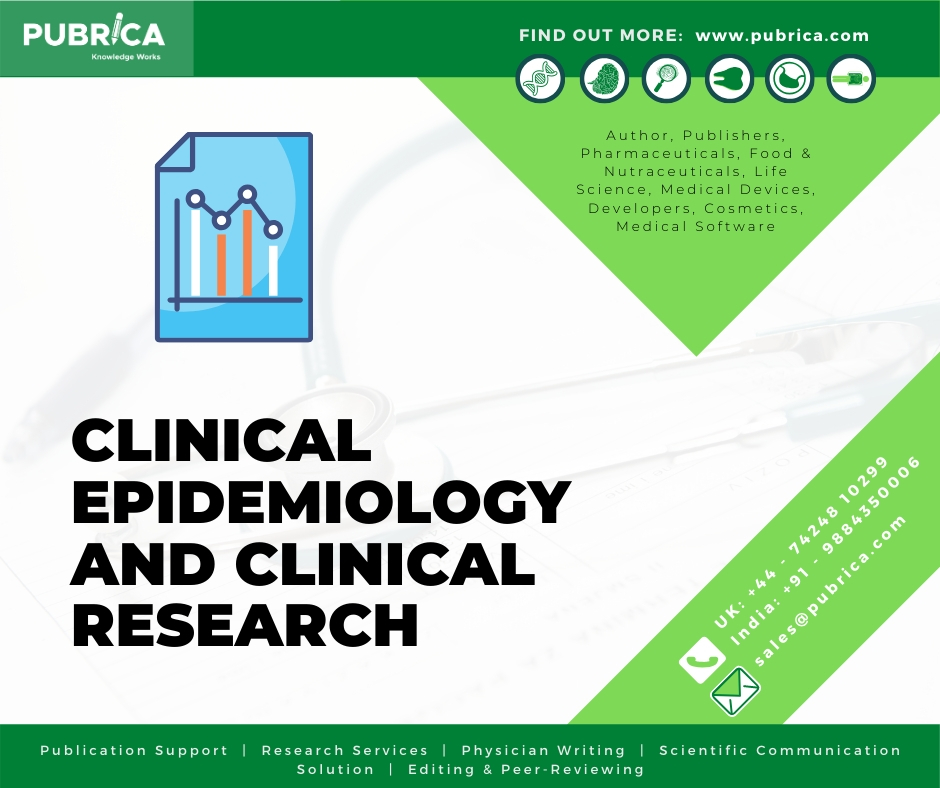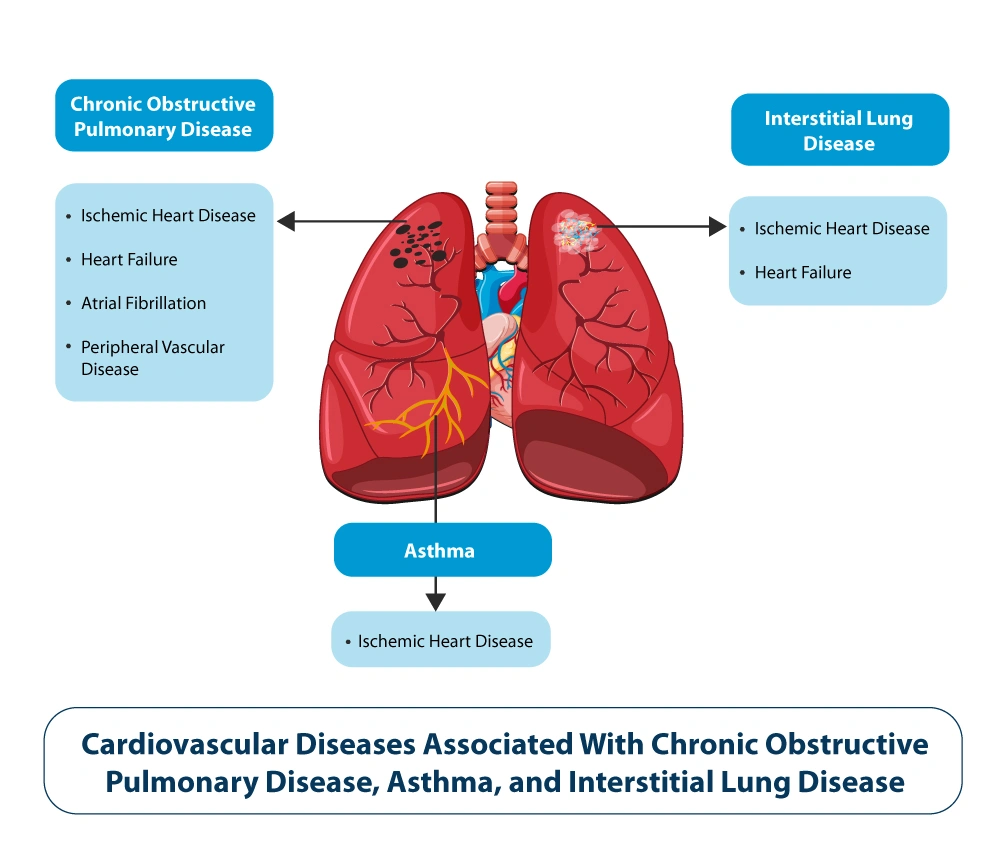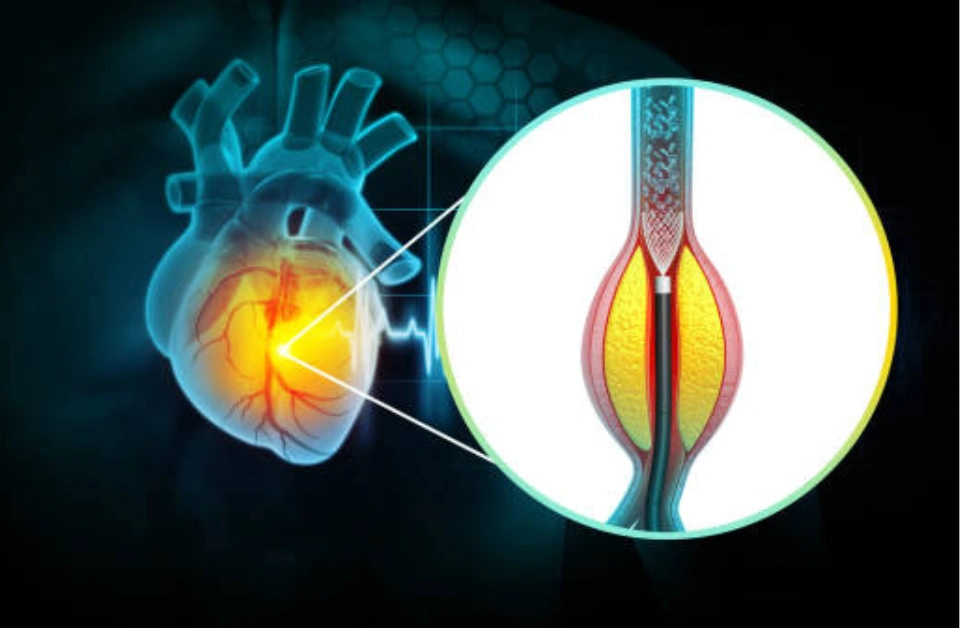
Clinical Epidemiology and Clinical Research
April 27, 2020What is the risk of bias assessment and different tools used to assess systematic review?
May 20, 2020The thoracic cavity contains the heart and the lungs, which are intimately connected. Though they are independent organ with different functions, they work together to ensure that all the cells in the body get the oxygen to survive. In most cases, breathing or the inhalation process is spontaneous and are effortless, but at times it can be very challenging. It is due to the complications present in the respiratory system or lungs such as infection, inflammation, allergies, asthma, bronchitis which can lead to difficulties in breathing and some situations indicate breathlessness that could be an indication that there is a problem with the heart of improper functioning.
In short
- The relationship between respiratory and cardiovascular diseases and the effect of cardiovascular diseases in patients with respiratory disease are still unclear.
- This study determines the relationship between the individual cardiovascular disease with the chronic obstructive pulmonary disease (COPD), asthma and interstitial lung disease (ILD)
- Pulmonary disease is independently associated with cardiac conditions, mostly during Heart Failure (HF), and Ischemic Heart Disease (IHD), which significantly contributes to all-cause mortality. Yet, patients with pulmonary disease are likely to receive coronary revascularization.

The exchange of gases between the heart and lungs
The primary function of the heart is to pump the blood around the body, and that circulation process takes blood into the lungs to top up the oxygen and removes other gases presents in the blood as it makes sure the Red Blood Cells are oxygenated and it is an incredible process too. The exchange of gasses in the blood is the coordination process between the heart and lungs, and the oxygen attaches to a protein called haemoglobin in the RBC. The charged or the oxygenated blood returns to the heart where it will be pumped back to the tissues and organs of the body through the blood vessels and capillaries. The body cells use the transported oxygen and release CO2, which as de-oxygenated blood will be moved back to the heart through veins and further the heart pumps it into the lungs. The CO2 passes through the thin walls of lungs and release CO2 when you breathe out, the whole process to start again.
How can the heart affect breathing?
The function of the human body is a delicate and finely balanced system, so when some significant part of the organs goes wrong, it can have enormous effects in function. For instance, the heart is damaged or diseased, and it cannot be able to pump efficiently, and that can significantly affect the lungs, meaning that breathing can be impaired.
The Pulmonary abnormalities and its association with cardiac disease
Pulmonary abnormalities are often present in patients with respiratory disorders, which includes neuromuscular or chest wall disorders, Chronic Obstructive Pulmonary Disease, sarcoidosis, idiopathic pulmonary fibrosis, and disorders of ventilatory control including obesity hypoventilation syndrome and sleep apnea syndromes. The complex nature of the organ and the interactions between the cardiovascular system and the lungs has been increasingly studied, and one such study shows that the most common cause of pressure overload is Pulmonary Arterial Hypertension (PAH) which leads to the dysfunction of the right ventricle. Pulmonary hypertension is classified as Group III in World Health Organization (WHO) scheme, and it is also known as pulmonary heart disease. The development of pulmonary heart disease is typically related to weaker prognosis and increased death. The association of increased cardiac death and impaired health status is due to the systemic manifestation of the pulmonary disorder, especially obstructive diseases.
How cardiac disease affects the pulmonary system?
Though systemic manifestation becoming increasingly recognized in obstructive disorders, cardiovascular involvement is related explicitly because of its association with deteriorated mortality rate and impaired health status. The evolving research data regarding pulmonary vascular abnormalities in the most common respiratory disorders, and it is mandatory to explore the relationship between cardiovascular death, and Chronic Obstructive Pulmonary Disease, atherosclerosis, and systemic inflammation. Cardiovascular disease and respiratory disorder are frequently coexisting as the shared risk factors are common. It has become clear that the combination between cardiovascular disease and chronic obstructive pulmonary disease is independent of the risk factors; certainly, cardiac disease occurrence and mortality rate is now well established along with the relationship between the severity of pulmonary obstruction. Further, the relationship between asthma, interstitial lung disease (ILD), characterized by restrictive lung function, with cardiovascular disease, are less well defined.
The association between pulmonary diseases and individual cardiovascular diseases, which comprise a range of different conditions with different mechanisms and manifestations, as it is not well characterized. Moreover, there are extensive data to show that lung diseases, particularly chronic obstructive pulmonary disease, adversely affect the prognosis of patients with cardiac conditions, few studies have investigated the impact of specific cardiovascular diseases on mortality in patients with lung diseases.
In summary, cardiovascular and respiratory diseases are the leading causes of premature death worldwide where half of all deaths from cardiovascular disease are quick and unexpected. Though studying two major organs and its relation involves more complexity in identifying new procedures as research professional develop their understanding of some of the most common and rarer types of heart and lung diseases the complex nature of the cardiac and respiratory disease will also be explored, particularly concerning the coordination between cardiovascular death, chronic obstructive pulmonary disease, atherosclerosis, and systemic inflammation.
Reference
- MS Vallerie V.McLaughlin, MeiLan K. Han, MD, and MD Fernando J. MartinezMD, MSFrom the University of Michigan Health System (MKH, VM, FJM), Ann Arbor, Mich, and Temple University School of Medicine (GC), Philadelphia, Pa. Pulmonary Diseases and the Heart., Circulation. 2007; 116:2992–3005
- Chowdhuri S, Crook ED, Taylor HA Jr, Badr MS. Cardiovascular complications of respiratory diseases. Am J Med Sci. 2007 Nov;334(5):361-80. Available from: https://www.ncbi.nlm.nih.gov/pubmed/18004091
- Rogliani P, Cazzola M, Calzetta L., Cardiovascular Disease in Chronic Respiratory Disorders and Beyond., J Am Coll Cardiol. 2019 May 7;73(17):2178-2180. DOI: 10.1016/j.jacc.2018.11.068.
- Carter P, Lagan J, Fortune C, Bhatt DL, Vestbo J, Niven R, Chaudhuri N, Schelbert EB, Potluri R, Miller CA., Association of Cardiovascular Disease With Respiratory Disease., J Am Coll Cardiol. 2019 May 7;73(17):2166-2177. DOI: 10.1016/j.jacc.2018.11.063.
- Jørgen Vestbo, Natural experiments and large databases in respiratory and cardiovascular disease, European Respiratory Review 2016 25: 130 – 134. DOI: 10.1183/16000617.0028-2016
- Lee ES, Vedanthan R, Jeemon P, Kamano JH, Kudesia P, Rajan V, Engelgau M, Moran AE. Quality Improvement in Cardiovascular Disease Care. Cardiovascular, Respiratory, and Related Disorders. 3rd edition. Washington (DC): The International Bank for Reconstruction and Development / The World Bank; 2017 Nov. Chapter 18.





